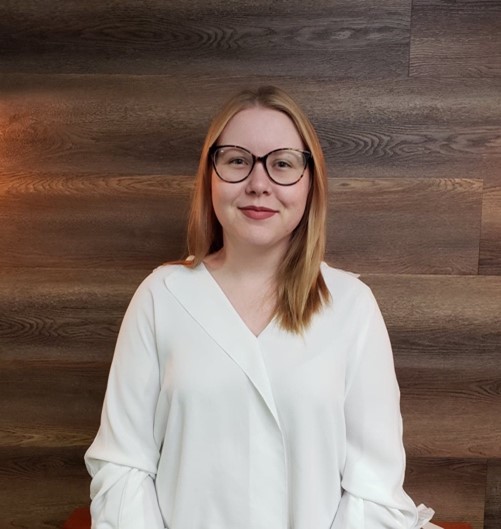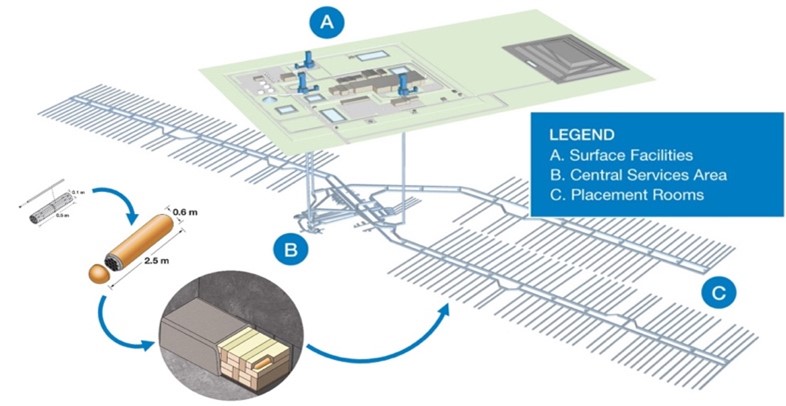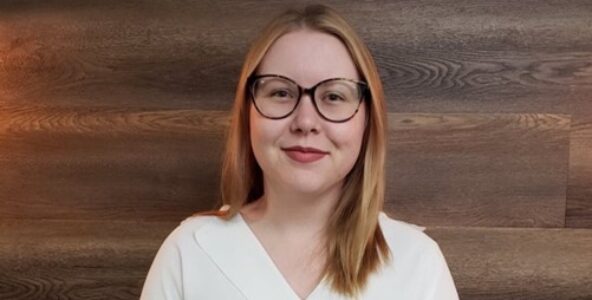As humans, we desire to learn more about the world around us – we are naturally curious beings, often finding ourselves asking why things happen the way they do. For many, studying science, technology, engineering, or mathematics (STEM) can help satisfy this basic need. Students can find innovative solutions to real-world problems, contribute to some of the world’s most ground-breaking discoveries, or learn transferable skills that could be applied to any occupation.
These are just a few things PhD student Claire Tully considered when she chose to pursue an education in chemistry. She was the first in her immediate family to attend university, and she wished to develop a fundamental understanding of the way our world works and to contribute to new discoveries in her field.

While many have similar aspirations, the journey to achieve these goals isn’t always easy. Many women and diverse individuals have to face a glass obstacle course in STEM fields, navigating through thousands of hurdles which may impede their voyage to success. These obstacles can profess themselves in many ways, from being turned down for a job or promotion, to being dismissed during conversations with peers. For many, they may feel like an imposter in an industry they are underrepresented in.
“There has historically been an unequal distribution of women and diverse peoples across STEM fields; of course, we have seen an increase of diversity in STEM throughout the years, but there are a variety factors which may continue to deter certain individuals from succeeding at a higher level,” Tully elaborated.
“Although many women flourish in high school, there tends to be a drop off at the university level, and this continues as we go up the ranks into the top spots of STEM disciplines. If you don’t see a lot of women around you, you are almost putting yourself in a position you need to be in, but you feel out of place because you’re the only one there.”
Fortunately, pursuing a PhD with Western University’s Electrochemistry and Corrosion Science Group (ECS) has offered Tully a different experience – working amongst a diverse group of individuals, she discovered how diversity and inclusion is crucial to fostering innovation, while it has also allowed her to inspire other individuals to lead impactful careers in STEM.
ECS Western is a group of around 20 scientists led by Professor James J. Noël and Professor David W. Shoesmith, who investigate various corrosion and environmental contamination problems. Currently, the group’s primary research focus is finding solutions for the disposal of high-level nuclear waste, a project they are working on in collaboration with the Nuclear Waste Management Organization (NWMO).
Nuclear is a zero-emission clean energy source that does not generate air pollutants like greenhouse gases, so it may be favourable, in terms of the current climate crisis, to start replacing other energy sources with nuclear power. Yet, one of the most pressing challenges is finding ways to dispose of used nuclear fuel.
High-level nuclear waste is a hazardous material that consists mainly of spent fuel discharged from nuclear reactors. While the fuel’s radioactivity decays away with time, it can remain radioactive for up to 1 million years – in the case that harmful radioactive contaminants were released into the surrounding environment, exposure can cause sickness, disease, or loss of life.
As an advocate for the transition to clean energy, Tully was eager to be a part of this research project. “Nuclear has a place in our future as far as energy demands go, but I think one of the limiting factors is the idea that there isn’t a long-term storage system or plan actively being utilized,” she explained. “I want to contribute to developing a solution for the long-term disposal of nuclear waste…This will affect the daily lives of everyone, especially in terms of addressing climate change.”

To safely contain and isolate nuclear waste, the proposed plan includes sealing used fuel bundles inside of copper-coated carbon-steel containers, encasing the containers in a compacted bentonite buffer box, and burying it all in suitable host rock in a deep geological repository (DGR) at a depth of 500 m. For her research, Tully investigates the microbially influenced corrosion of the used fuel containers in compacted bentonite clay. Microbially influenced corrosion, also known as MIC, is material degradation that is caused or promoted by the metabolic activity of microorganisms. She is collaborating with microbiologists at the University of Waterloo to analyze how microbes present in the bentonite clay could affect the corrosion of copper – in this worst-case hypothetical, container degradation through corrosion could compromise the entire DGR system.
Tully also investigates the effect of bentonite dry density on the suppression of microbial activity. If tightly packed, the pores between the clay particles are small enough that microorganisms cannot pass through them – additionally, if the bentonite particles are packed tightly enough, there is little room for water, meaning the microbes trapped within the clay cannot obtain enough water to be metabolically active.
Tully is trying to discover how tightly packed the clay must be to have such effects on the microbes – the packing tightness is described in terms of ‘density’, or how much clay can be packed within a certain volume. As a control, Tully dries out the clay to determine its moisture content, which she then uses in her density calculations – she cannot use a dried-out clay in her experiments, because the clay must have a certain moisture content to aid in its compaction. So, researchers use ‘dry density‘, because they are concerned with how tightly the clay is packed regardless of any water that may be present.
“In the context of the deep geological repository, if we are able to suppress the microbes that are alive or being metabolically active, we can suppress the corrosion associated with their activity,” Tully clarified. “That’s the ultimate goal of the research – we want to ensure the integrity of these used fuel containers over the lifetime of disposal, to protect both citizens and the environment from unsafe exposure to the used fuel.”
Developing a plan to safely dispose of used nuclear fuel is something that will affect the lives of all Canadians – so, including the perspectives of a diverse group of scientists will only bring benefits to the work the ECS lab is completing. The quality of their research, and its ability to positively impact the lives of individuals, communities, and the nation of Canada, is intrinsically tied to the individual scientists involved.

“We have a diverse group of scientists, and bringing these perspectives together allows us to paint a more holistic picture of the work we are doing,” Tully elaborated. “You need to have different experiences to build a better foundation for what you’re investigating, and your experience does bring something to how you study and how you approach problems.”
For many who have studied with ECS Western, the lab feels like home. Everyone is willing to help each other out, and to offer advice both academically and socially. Collaborating with a diverse group of individuals who want to see each other succeed has shown Tully the value that inclusion and teamwork can bring to their research.
“Every day when I walk into the lab, I’m going to do something that I’ve never done before, and when I can’t figure something out or get stuck, I have around 20 people that I can ask for assistance,” Tully shared.
“We have built both an academic and social network, and because we genuinely want each other to do well, we can help each other succeed to our fullest potential.”
The graduate student has always wanted her research to help society. Now, this is something she can accomplish not only as a student with the ECS lab, but as a mentor.
Doing a PhD has allowed her to take on the position of co-chair of Inspiring Diversity in STEM (IDSTEM), a grassroots initiative based in London, Ontario that promotes diversity and inclusion in science, technology, engineering, and mathematics.
To cultivate a more inclusive environment in STEM, the organization connects underrepresented groups with inspiring role models through conferences and networking events. Their goal is to help students realize opportunities and pursue them with confidence.

“We bring in speakers to talk about their experiences, some of the challenges that they’ve faced, and how they’ve overcome those challenges, because we want to show students that there is a place for them in STEM,” explained Tully.
“We want to give them all of the tools they need to continue their careers in STEM and have impactful careers that they’re passionate about.”
As young academics, we may have aspirations to make ground-breaking contributions to our field of study that nobody has before. This might sound far-fetched as we grow older, and there are many barriers that we may face along the way that could discourage us from achieving these goals. But Tully’s experience with the ECS lab shows that the diversity of thought and innovation comes with the diversity of people – in the process, discoveries can be made that will have a lasting effect on our entire population. Anybody can succeed in STEM, and experiencing this first-hand can allow us to encourage others to do the same.
“It means a lot to me to be in this position. It’s helping myself, but it’s also allowing me to help other people, and I think that’s the most well-rounded educational degree.”
